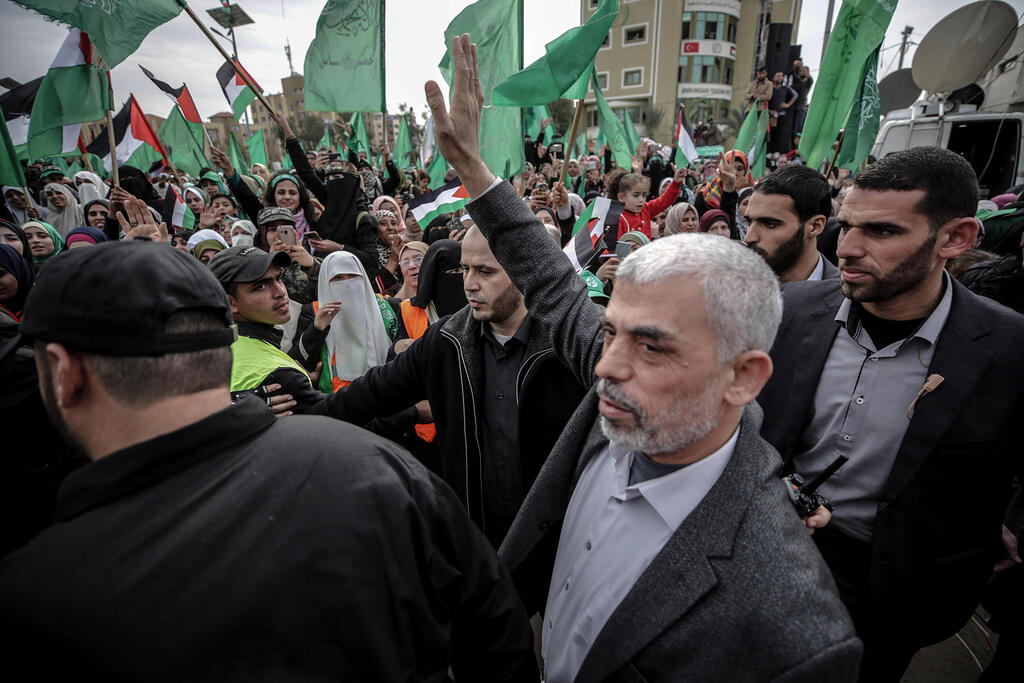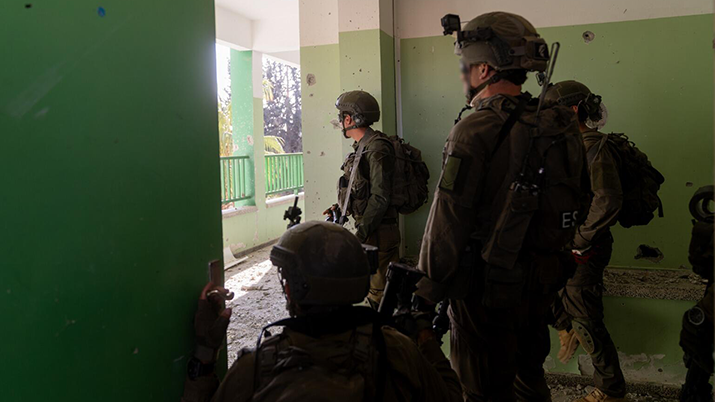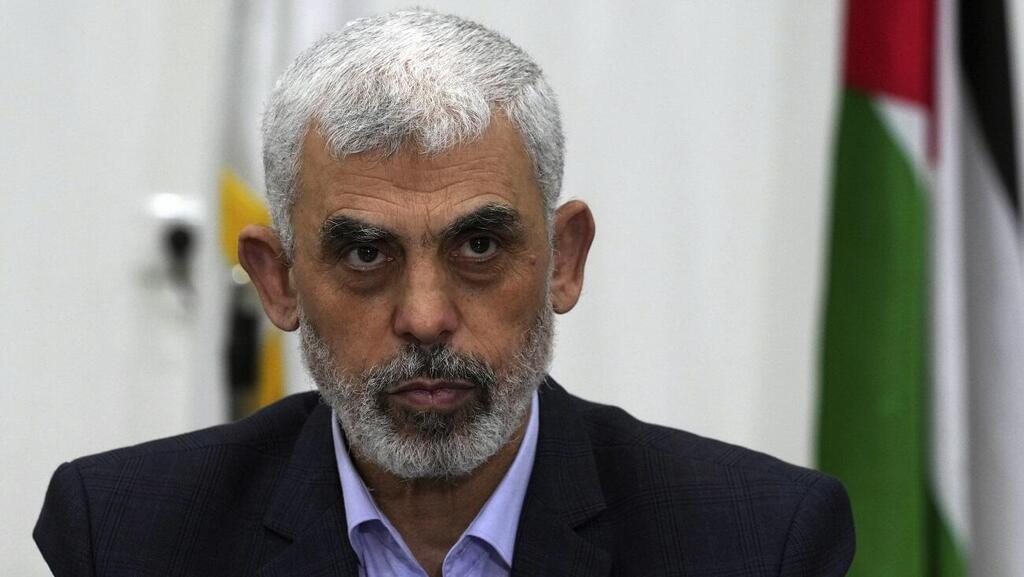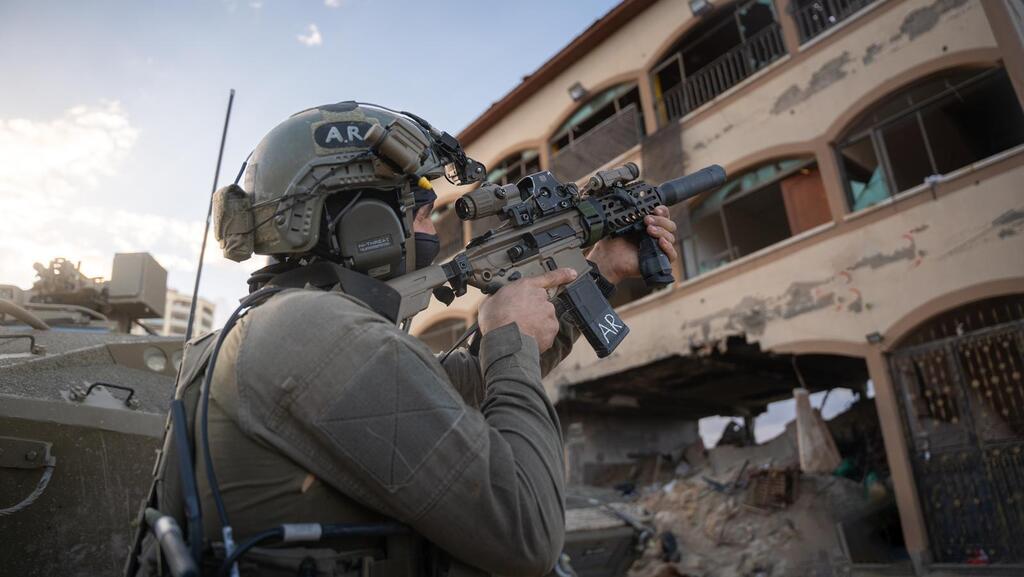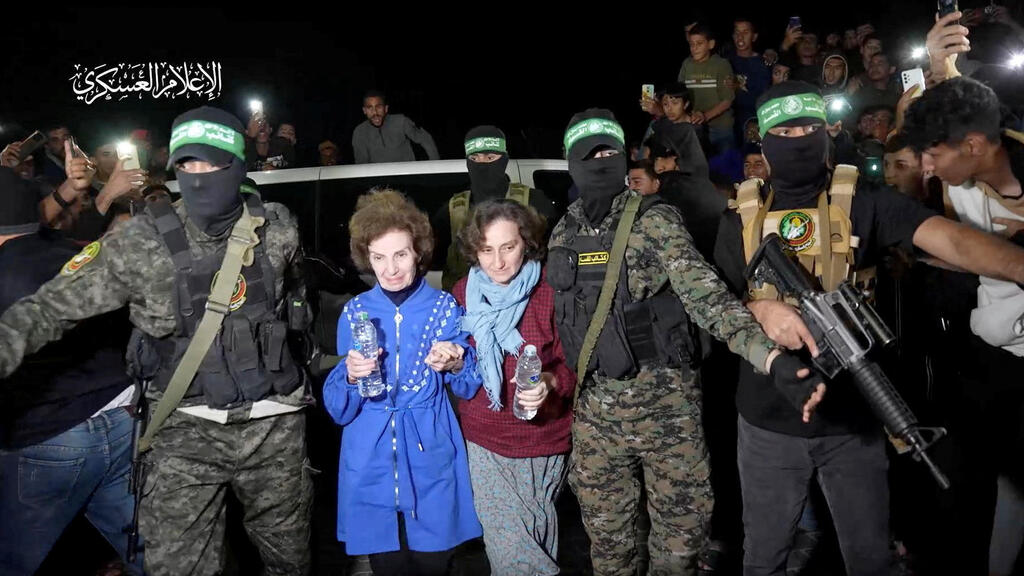Getting your Trinity Audio player ready...
The fighting in Gaza was renewed because what Hamas is currently proposing to Israel is an agreement of complete surrender to all its demands in exchange for the release of more Israeli captives. If Israel were to accept even some of them, it would be exposing itself to a long-term existential threat.
More stories:
Therefore, the IDF is currently entering a new and decisive stage in the war against Hams. This is the stage where we’ll either win or lose, and therefore, it’s appropriate for the war cabinet, and the entire government to define for themselves, in specific terms, what they actually want to achieve and in what timeframes, and then establish a military and diplomatic framework to allow achieving victory.
Initially, two war goals were set by the government: the weakening of Hamas's control in the Gaza Strip and the return of all captives. Last week, Prime Minister Benjamin Netanyahu added a third goal: to restore a sense of security and peace to residents close to the southern and northern border areas, who were forced to evacuate their homes and are now refugees in their own country.
Of these three goals, "weakening Hamas" is more of a slogan than a defined mission that the IDF needs to carry out. Similarly, other terms officials use, such as "destroy," "annihilate," "topple," "crush," and "break," are all impressionistic and express an angry sentiment rather than a practical plan.
Of all these terms, "dismantling Hamas" is the most practical and clear goal. Dismantling Hamas's rule in the Strip has five main components that the IDF needs to impact irreparably:
1. The most crucial component, which is the primary and initial goal of the IDF in the current and upcoming stages of the conflict, is to target Hamas’ top military and political officials in the Gaza Strip.
This means that figures such as Ismail Haniyeh, Yahya Sinwar, Mohammad Deif, Marwan Issa, and other members of this group must either leave the region or, alternatively, be captured by Israel, or, in the less favorable case, be located far from the Strip where they can’t cause harm. When the senior leadership ceases to function, dismantling the other areas will be simpler.
2. The second component that the IDF needs to dismantle is Hams’ field commanders and terrorists scattered in various neighborhoods and districts of Gaza in Khan Yunis, Rafah, and their surroundings.
3. The third component is the military infrastructure that serves Hamas, consisting of logistics and rocket launch pads, underground tunnels, elevated combat positions, communication systems, and command centers. For this, a thorough and well-coordinated ground operation is required, but not in the style used in the northern part of the Strip, a more focused approach is needed.
4. The fourth component is the Palestinian Civil Police Force enforcing the law in Gaza. Its weakness is already evident as hundreds of residents, both in the north and the south – are looting stores, food warehouses, and demolished houses.
No one acts against these crimes, indicating a significant decline in Hamas's ability to enforce law and order. This is due, among other things, to the fact that many of Hamas' terrorists are former police officers who joined the terror group.
5. The fifth component Hamas’ politburo offices and the welfare institutions - the Dawah - operated by Hamas around mosques in Gaza.
The most critical components at the current stage of the war are neutralizing Hamas’ leadership and severely impacting the communication, command, and control system in their control. Without them, Hamas will weaken and eventually become a nuisance.
Terrorists will attempt sporadic attacks on IDF forces, but they won't be a significant hindrance to the upcoming phase where the military will systematically destroy Hamas terror infrastructure and focus on dealing with the terror organization’s politburo institutions.
A question of time
Some argue that Israel has only two weeks left to the war before the U.S. and the international community force a cease-fire in Gaza. This claim, in my estimation, isn’t accurate. Firstly, because U.S. President Joe Biden’s administration explicitly stated it would allow Israel to complete the dismantling of Hamas, and unless a catastrophic event takes place, the IDF will have the time it needs to carry out this mission.
If the IDF operates with determination and the appropriate caution, it can dismantle Hamas’ operational, military, and political abilities in Gaza within weeks to a few months. By doing so, it can also undermine what Americans and Europeans refer to as the "concept" of Hamas, which has been seeded in the hearts of Palestinians and others in the broader Arab world.
Experience shows that when terrorist organizations and guerrilla groups driven by an idea or religious zeal are harmed and stop functioning, their idea weakens, and their grip on power can be loosened, provided the other side knows how to employ educational means alongside military ones.
This has been demonstrated with Nazi Germany and Japan in World War II and, more recently, with ISIS and Al-Qaeda. All were ideological entities, some state-driven and some Islamist terrorist organizations with motivational and religious fervor that turned from imminent threats into nuisances that could be dealt with and struck repeatedly until they disappeared.
If the government wants to ensure the military has the time it needs for these missions, it needs to do two things: first, present the U.S. with a plan for the day after the war that will be accepted by the Biden administration, and second - avoid a humanitarian disaster in Gaza, such as incurring civilian casualties.
The work to release Israeli hostages
Hamas’ dismantling, however, is only one of the war’s goals. Another no less important one is the return of Israeli captives. The IDF must take into account, as it operates against Hamas, the possibility that it may harm this crucial goal.
There’s the danger that captives may be harmed when they get caught up in the fighting. There’s also the possibility that when Hamas’ leadership realizes their time is coming to an end, they may harm Israeli captives within their reach.
The likelihood of such a scenario occurring isn’t high because the captives are and last bargaining chip in the terrorist organization’s hands, and they will hold on to it at almost any cost, even if they suffer a decisive blow.
In any case, the IDF is conducting intensive intelligence operations to determine the whereabouts of the hostages, who among them is alive, and whether something can be done to assist in their release without relying on a deal with Hamas.
Israel still has challenges ahead. What will happen in the coming days and weeks may not necessarily resemble what we saw in the fighting in Gaza’s north before the hostage release deal.
We must hope that the IDF and Israel’s intelligence bodies will succeed together in carrying out the two urgent tasks set to them in this act of the war – both the return of captives and the dismantling of Hamas in Gaza.



